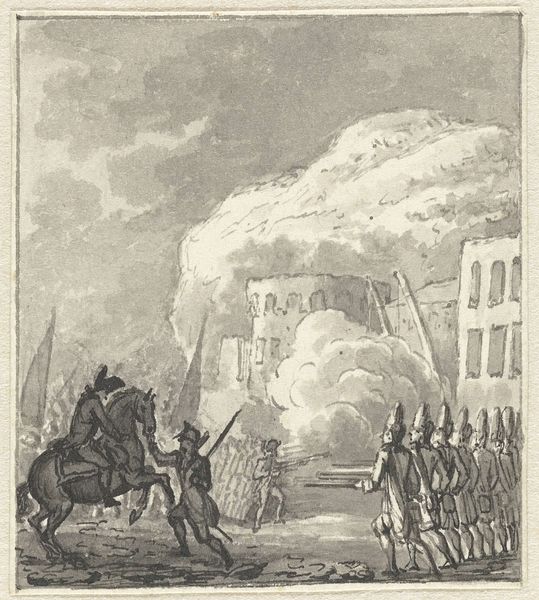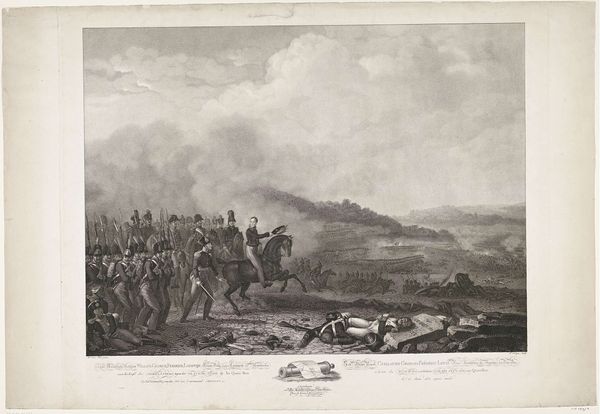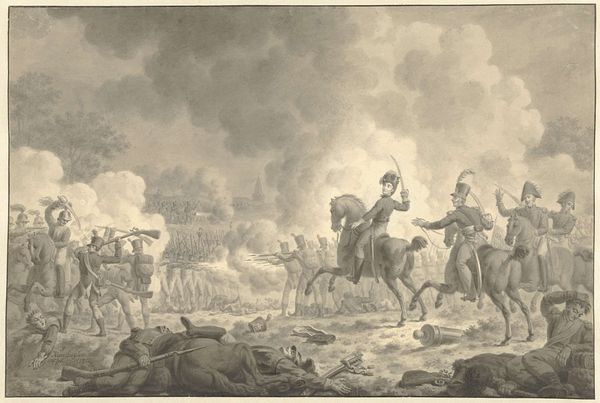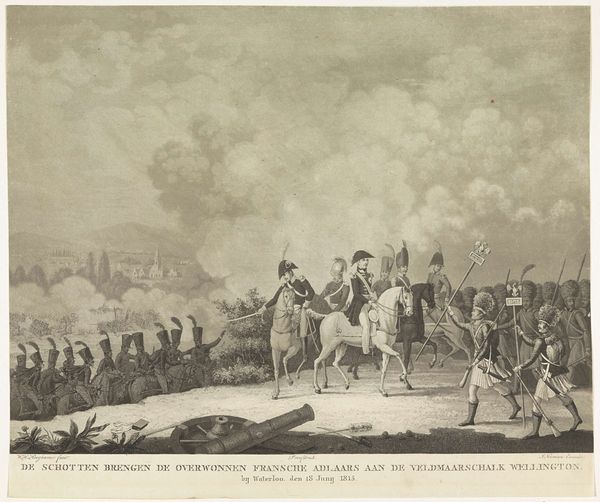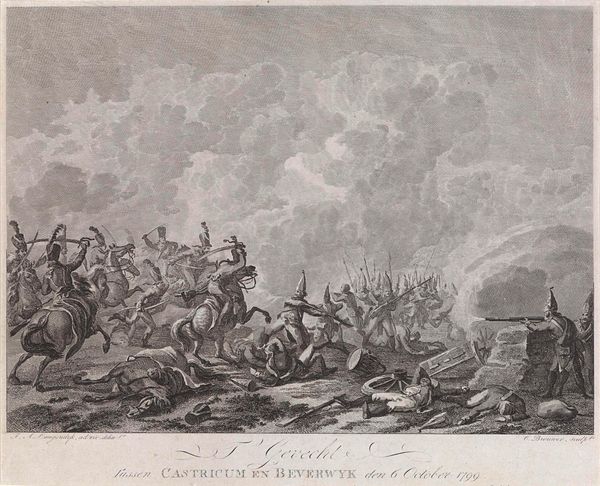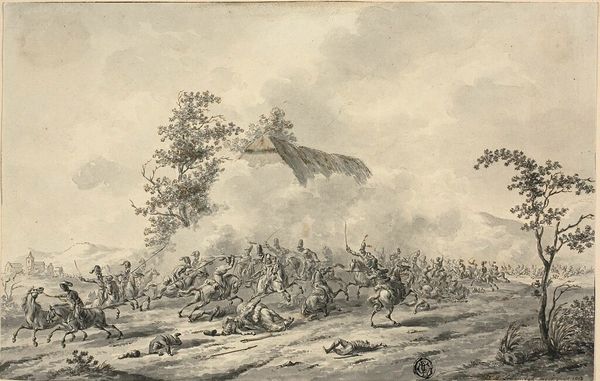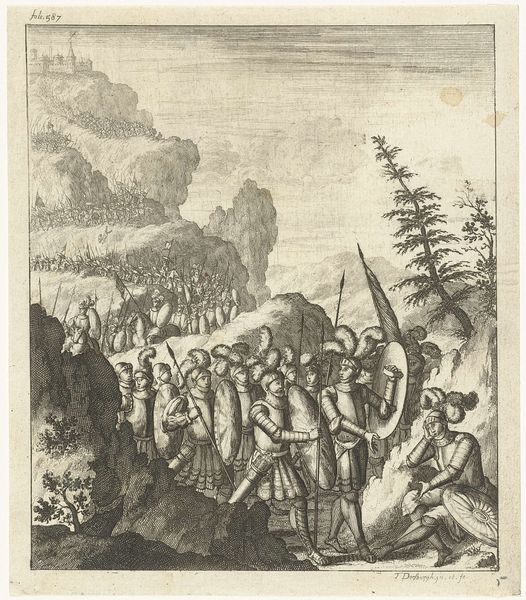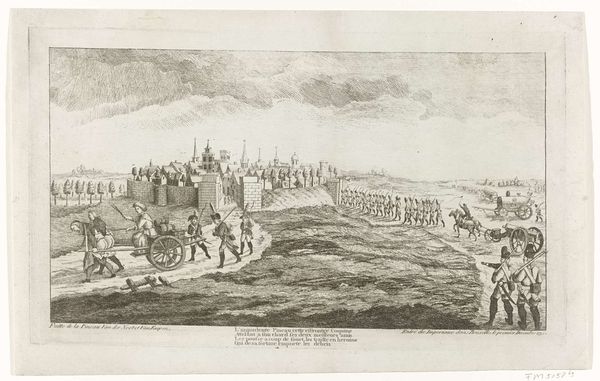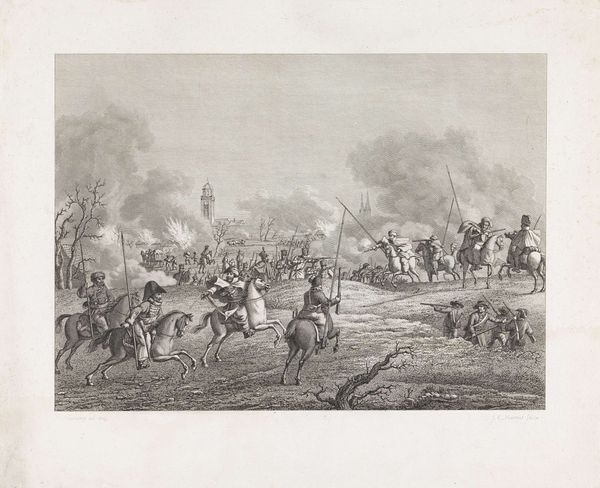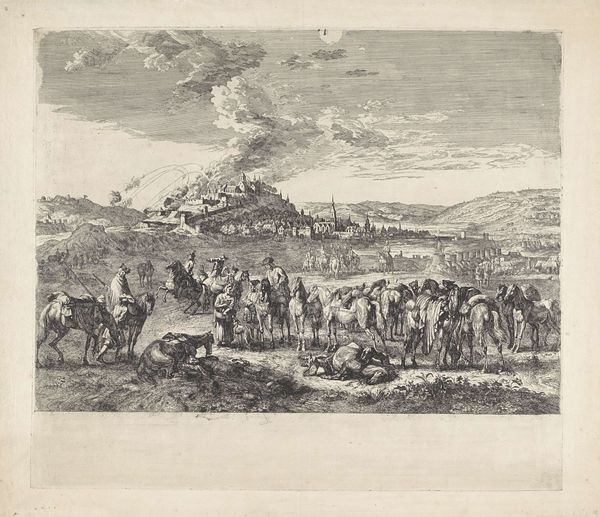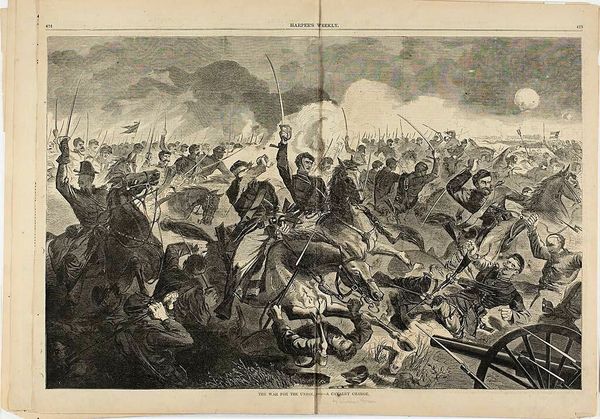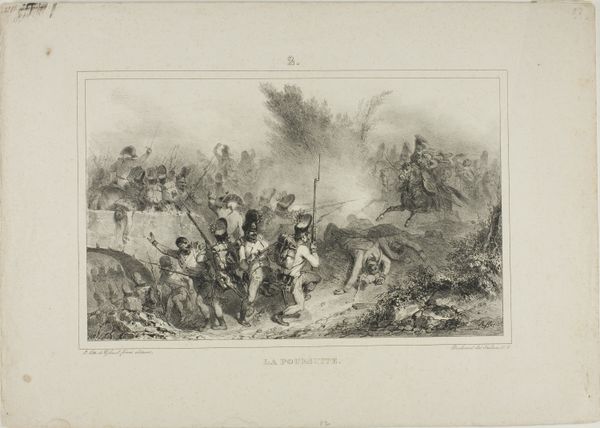
Drawing for a Plate From "Gravures historiques des principaux événements Depuis l'Ouverture des Etats Generaux ..." Paris 1789 1784 - 1794
0:00
0:00
drawing, print, pencil, engraving
#
drawing
# print
#
landscape
#
figuration
#
pencil
#
history-painting
#
engraving
Dimensions: 5 1/4 x 3 5/8 in. (13.4 x 9.2 cm.)
Copyright: Public Domain
Curator: This drawing, by Jean Francois Janinet, dates from between 1784 and 1794. It's titled "Drawing for a Plate From "Gravures historiques des principaux évènements Depuis l'Ouverture des Etats Generaux...Paris 1789." You can see it here at The Metropolitan Museum of Art. Editor: My first impression is a sense of strained labor and movement within a muted, almost bleak landscape. The pencil strokes are incredibly delicate, yet they convey a feeling of significant effort and hardship. Curator: Absolutely. Janinet was working during a period of immense social upheaval. Consider the historical context. The title explicitly mentions the Estates-General, a pivotal moment leading up to the French Revolution. The drawing hints at the toils and burdens that fueled revolutionary sentiment. Editor: I'm struck by the way the artist depicts labor – specifically, what looks like men struggling to move what appears to be a cart full of hay or wheat. The repetition of figures straining under the load suggests an almost dehumanizing aspect of agricultural labor. Curator: And the choice of engraving and print as media democratizes this imagery. It suggests the intention of circulating these scenes widely, perhaps as a commentary or even a form of political agitation. Consider how printed images played a role in shaping public opinion at the time. Editor: The drawing seems less about celebrating agricultural abundance, and more focused on the material reality of that labor. We need food to survive. This seems to highlight the sheer physical burden of that process, almost like raw materials meet manual toil. Curator: Indeed. It pulls the idyllic pastoral image apart. There's a deliberate commentary here. It asks viewers to think critically about the social cost of food production. Janinet used a seemingly simple scene to speak volumes about the existing inequalities during pre-revolution France. Editor: Thinking about Janinet’s production process, the act of drawing something to then be translated to engraving speaks volumes. Labor creates labor in this context too; it also mirrors on an intellectual level how power and control are exerted in the production and reception of these prints. Curator: A crucial point. Ultimately, what this drawing reveals is not just a scene, but a network of social relationships and the undercurrents of revolutionary France on the verge of erupting. Editor: It's a testament to how close observation of seemingly mundane labor reveals broader societal structures and the power relations embedded within them.
Comments
No comments
Be the first to comment and join the conversation on the ultimate creative platform.
